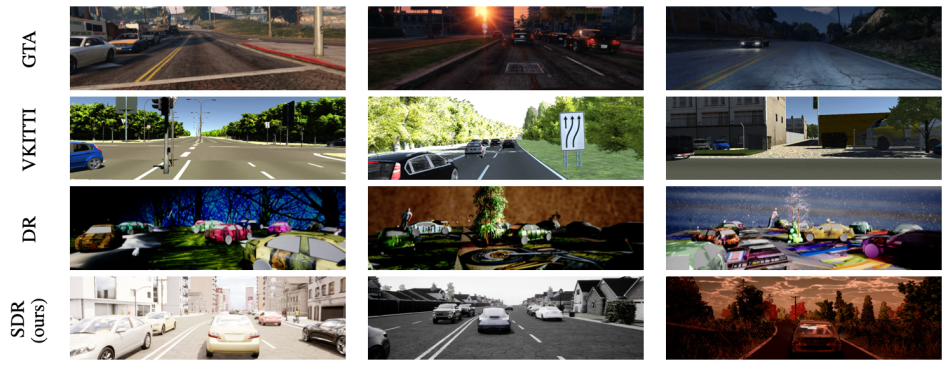Research with NVIDIA Simulation Technology, and University of Toronto.
Paper: arXiv
With Aayush Prakash, Shaad Boochoon, Mark Brophy, David Acuna, Eric Cameracci, Gavriel State, Omer Shapira, Stan Birchfield
Domain Randomization, a method for generalizing synthetic datasets, is limited in one crucial way: it’s not prescriptive enough towards the learning goal. We challenged this by adding some constraints on the domains: for example, in a road generator, cars should generally be on the road, generally facing up. This technique beat the state of the art techniques for generating synthetic data.
Abstract: We present structured domain randomization (SDR), a variant of domain randomization (DR) that takes into account the structure and context of the scene. In contrast to DR, which places objects and distractors randomly according to a uniform probability distribution, SDR places objects and distractors randomly according to probability distributions that arise from the specific problem at hand. In this manner, SDR-generated imagery enables the neural network to take the context around an object into consideration during detection. We demonstrate the power of SDR for the problem of 2D bounding box car detection, achieving competitive results on real data after training only on synthetic data. On the KITTI easy, moderate, and hard tasks, we show that SDR outperforms other approaches to generating synthetic data (VKITTI, Sim 200k, or DR), as well as real data collected in a different domain (BDD100K). Moreover, synthetic SDR data combined with real KITTI data outperforms real KITTI data alone.
